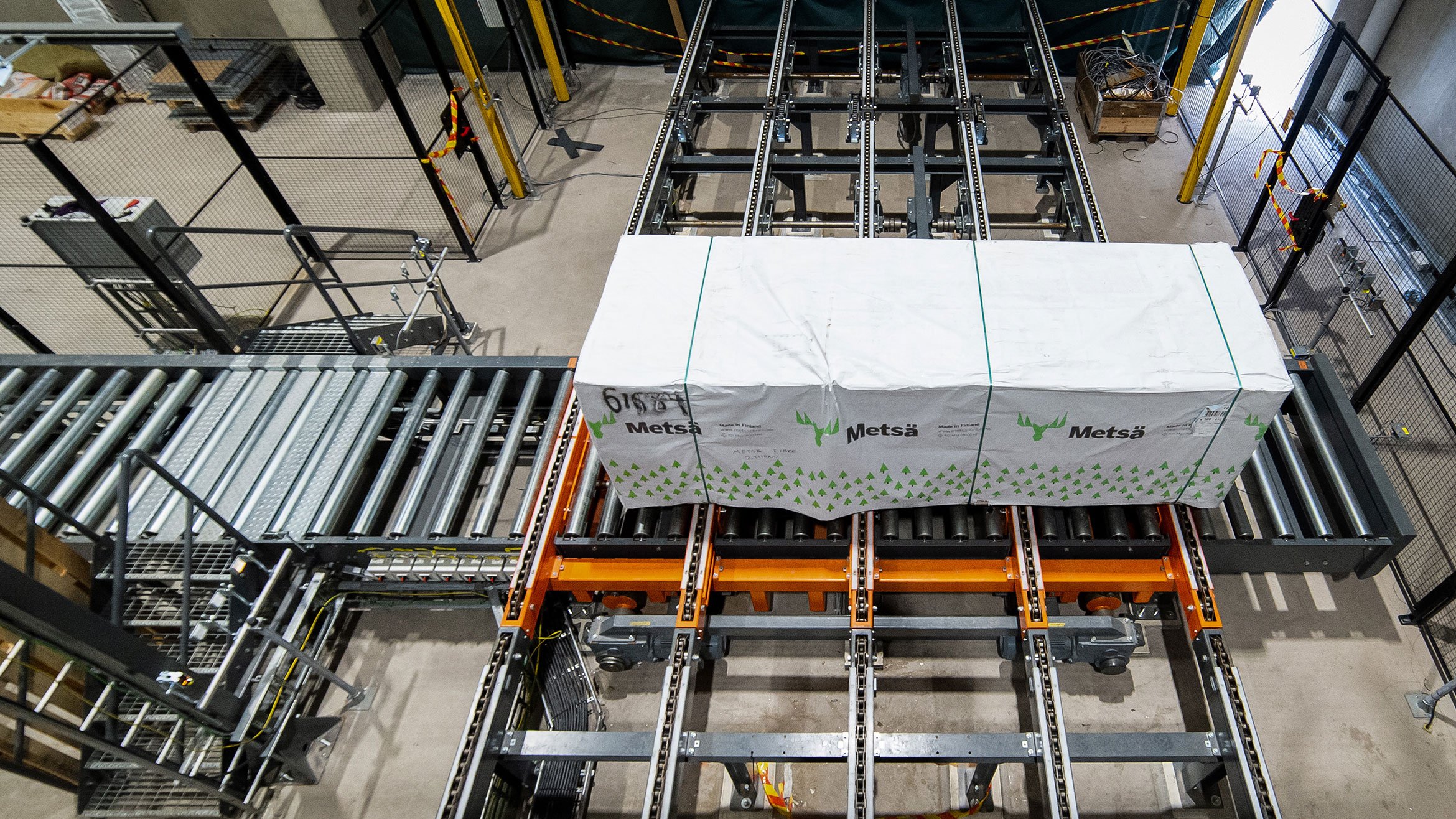“The benefits of automated loading are improved environmental efficiency, occupational and product safety and uninterrupted operations,” says Mikko Taupila, Project Manager at the mill.
The equipment and systems for the new loading concept are being supplied by Metsä Fibre’s trusted partner Raumaster Paper. The loading concept for the Rauma sawmill is based on practices familiar from the pulp and paper industry,” says Matias Lehtinen, Project Manager at Raumaster Paper. Raumaster has considerable experience in providing solutions for these industries.
“The result is a conveyor line for finished sawn timber packages and an automated loading system that makes loading fast, automatic and safe. Loading from intermediate storage will no longer be done with forklifts. With the machines doing the heavy work, the main task of the personnel will be to supervise the loading process and ensure quality,” says Taupila.
When machines do the heavy work, the main task for personnel is to supervise the loading process and ensure quality.
Finished packages of sawn timber from the packing unit to the truck
The packing process starts when the finished bundles of sawn timber first come from the packing unit and land on a 20-metre roller conveyor line. Conveyors move the bundles towards a chain conveyor line, which takes them close to the loading station. At the loading station, the bundles on the conveyors are sorted for loading and guided forward by loading bars, of which the Rauma sawmill has fourteen. A truck waits for the bundles at the designated loading point, and they are then loaded under the truck driver’s supervision.
“The control of automatic loading is connected directly to the control system of the entire sawmill, so its operation can be monitored from the central control room. The carbon footprint is reduced, because diesel forklifts are no longer used in loading, and no intermediate storage is needed at the sawmill. All goods coming off the line are sorted automatically, and deliveries to the port run in three shifts around the clock,” says Lehtinen.
An added advantage for deliveries is that the consignment notes are automatically processed by the system and immediately sent to the customer, the port, the carrier and the loading system supplier. This means that all parties involved in the transport receive up-to-date information without manual paperwork.

Valuable data about the loading process
In July 2021, the equipment required for automated loading, including control systems and user interfaces, was tested in Raumaster Paper’s assembly hall. The aim was to ensure that the automated loading process worked safely, and that the huge mass of data created during the process remained available for further use by the sawmill experts. To ensure perfect data flow and storage, the systems must operate seamlessly. This in turn means the systems communicate with each other, and any fault situations are immediately visible to the operators.
In the event of a problem, the line can be shut down quickly and restarted immediately after the fault report has been processed. The job description of operators is therefore changing; line work is becoming more of an expert task, with an information management orientation that focuses on preventing anomalies.
Raumaster Paper and its parent company Raumaster have also supplied Metsä Fibre with systems for the Kemi bioproduct mill, and a by-product processing line for the Rauma sawmill.
